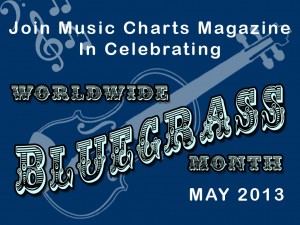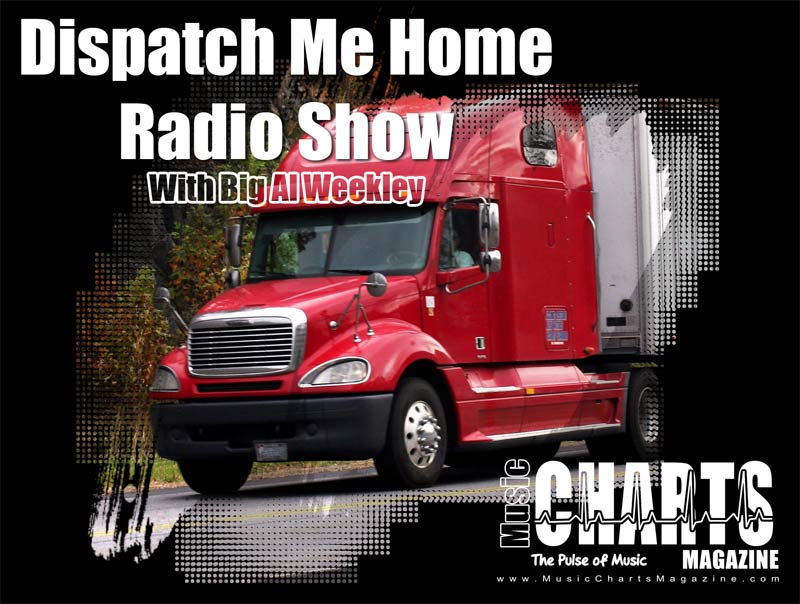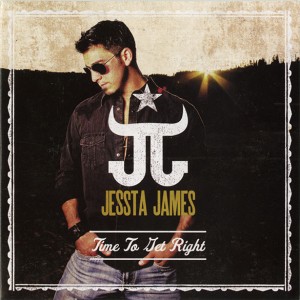MCM Home
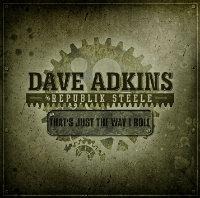 Dave Adkins & Republik Steele Release New CD
Dave Adkins & Republik Steele Release New CD
Rural Rhythm Records announces an exciting new album release available today, THAT’S JUST THE WAY I ROLL, by Dave Adkins & Republik Steele.
“Snazzy stuff for real people that still want some music they can feel and believe in. Well done,” said Midwest Record in a new review for the album.
Dave Adkins not only impresses listeners with his powerful lead vocals, but he contributed three original songs on the album including “Heartstrings”, “Get ‘Em Up”and the impressive “Rio.”
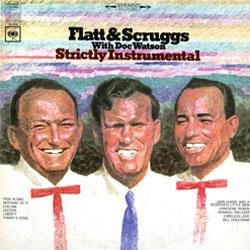 Fans Voted–Legacy Releases Digital Flatt and Scruggs with Doc Watson
Fans Voted–Legacy Releases Digital Flatt and Scruggs with Doc Watson
Posted: 16 May 2013 11:38 AM PDT
Legacy Recordings, the catalog division of Sony Music Entertainment, announces the first four catalog titles to be released digitally in response to the enthusiasm of music fans voting online at Legacy’s website
The four LP titles now available for purchase as digital downloads mark the first of a monthly series of albums to be released digitally according to crowd sourced fan feedback.
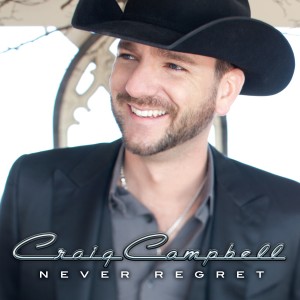 One of the reasons I enjoy what I do, is that I have the opportunity to hear new albums, before they are released to the public. Today, I listened to a great one. Craig Campbell’s sophomore album will hit stores on May 7. This is a CD that all country music fans are going to enjoy. And for those who have not heard a lot of Craig’s music, it is the perfect introduction.
One of the reasons I enjoy what I do, is that I have the opportunity to hear new albums, before they are released to the public. Today, I listened to a great one. Craig Campbell’s sophomore album will hit stores on May 7. This is a CD that all country music fans are going to enjoy. And for those who have not heard a lot of Craig’s music, it is the perfect introduction.“When She Grows Up” begins with daughter Preslee giving us a small sampling of her vocal talents, with “Jesus Loves Me,” then Dad takes over with a really inspiring song, all about our kids – what they are to us, and what we are to them. “What she sees in me, that’s what I want to be – when she grows up.” It’s one of those songs you won’t really want to sing along with, and your probably won’t want to dance to it, but you sure are going to want to listen to it. It is one of my favorite songs on the album.
If you have a front porch, you’ll be able to relate to “That’s Why God Made a Front Porch.” It’s one of the slow ones on the album. This one reminds me a lot of Craig Morgan’s “Almost Home.” One phrase seems to run right into the next, but you need ever one of those phrases to tell the story. While the song sounds a lot like “Almost Home,” it is a completely different story. This is a good song to put on when you want to sit back in a comfortable chair, and relax.
There are a lot of people out there who can relate to “When Ends Don’t Meet.” It pretty much tells us all what we already know about the economy, bills overdue, a leaky roof, and having someone to lean on in times of trouble.
Most of the songs on this album are slow to mid-tempo. Everyone of them is perfect for Craig, and while I have my favorite – I think he could just about release any of them to radio as his follow-up single to “Outta My Head”.
Here is your track listing, with authors: Truck-N-Roll, Craig Campbell, Brett Beavers, Chris Lindsey; Keep Them Kisses Comin’ Dallas Davidson, Ben Hayslip; When She Grows UP, Craig Campbell, Alex Dooley, Arlos Smith; Tomorrow is Gone, Tommy Conners, Kevin Denney, Phillip White; Never Regret, Craig Campbell, Jason Matthews, Jim McCormick; My Baby’s Daddy, Brandon Kinney, Cole Swindell; Topless, Craig Campbell, Mindy Ellis, Blair Daly; When Ends Don’t Meet, Jonathan Singleton, Tony Lane, Dan Isbell; Outta My Head, Brandon Kinney Michael Carter, Cole Swindell; That’s Why God Made a Front Porch, Craig Campbell, Lee Thomas Miller; You Can Come Over, Brandy Clark Jessie Jo Dillon, Mark Narmore; Lotta Good That Does Me Now, Craig Campbell, Michael White and Justin Wilson.
The CD was produced by Keith Stegall and Matt Rovey, and recorded at Sound Emporium Studios in Nashville.
Listen to the song here

The Foggy Mountain Boys was an American bluegrass band.
The band was founded by guitarist Lester Flatt and banjo player Earl Scruggs.
The group is considered one of the premier bluegrass groups in the history of the genre.
Originally formed in 1948 by Flatt, who brought Scruggs with him shortly after leaving Bill Monroe’s bluegrass band. Historically, Monroe is considered a premier innovator of the musical genre of bluegrass, with the many early successes that promoted bluegrass to a higher interest.
Flatt and Scruggs and The Foggy Mountain Boys (in various forms and line-ups) recorded and performed together up until 1969. The Foggy Mountain Boys are seen as one of the landmark bands in bluegrass music.
Although it featured various casts, during the years of The Lester Flatt and Earl Scruggs Grand Ole Opry Show, notably sponsored by grain and flour producer Martha White, the band showcased fiddle player Paul Warren, a master player both Old-Time and Bluegrass fiddling styles, whose technique reflected all qualitative aspects of ‘the bluegrass breakdown’ and fast bowing style, dobro player Uncle Josh Graves, an innovator of the advanced playing style of the instrument now used in the genre, stand-up bass player Cousin Jake Tullock, and mandolinist Curly Seckler.
Lester Flatt worked for Monroe at the time Earl Scruggs was considered for Bill Monroe’s band, the Blue Grass Boys, in 1946. The two left that band early in 1948, and within a few months had formed the Foggy Mountain Boys. Scruggs’ banjo style and Flatt’s rhythm guitar style as well as his vocals, gave them a distinctive sound that won them many fans. In 1955, they became members of the Grand Ole Opry. Many of the songs on their albums are credited to “Certain and Stacey”. These songs were in fact written by Flatt, Scruggs, and various other members of the Foggy Mountain Boys. Certain and Stacey are the maiden names of the wives of Flatt and Scruggs (Louise Certain, wife of Earl Scruggs, and Gladys Stacey, wife of Lester Flatt).
In the film O Brother, Where Art Thou?, the band formed by the heroes is called the “Soggy Bottom Boys” as a tribute to the band.
Read more at: http://en.wikipedia.org/wiki/Lester_Flatt_and_Earl_Scruggs
 A Big Music Charts Magazine Welcome to Darwin Davidson (left) from WERU in Maine.
A Big Music Charts Magazine Welcome to Darwin Davidson (left) from WERU in Maine.
In celebration of “International Bluegrass Month of May 2013” we will start off the month with nothing less than the bluegrass radio show “BRONZEWOUND”.
Darwin Davidson takes you through his old LP collection and shares a great array of Bluegrass tunes. We hope you enjoy this very special show!
Show: “BRONZEWOUND” – with “Darwin Davidson” – 1st hour – & – 2nd hour – Enjoy!
1st Hour
Part #1
Part #2
Part #3
2nd Hour
Part #1
Part #2
Part #3
Darwin Davidson co-hosts, along with David Manski, the weekly bluegrass show Bronzewound, every Thursday night from 8:00 PM to 10:00 PM, on WERU-FM, Community Radio, Blue Hill, Maine. WERU-FM is a listener-supported community radio station that broadcasts a 12,000 watt signal to Eastern Maine and also over the internet at www.weru.org.
Darwin’s first broadcast was in September 1997. His playlists are composed of albums that he receives at the radio station, artists that he meets at various bluegrass festivals, at the IBMA annual trade show and festival, and from his own bluegrass music collection that he started before becoming a DJ on WERU. Every show brings a combination of classic bluegrass, probably some “newgrass”, a bit of old-time string band music and possibly an interview with bluegrass performers talking about their latest album release.
A visit to Darwin’s personal website, www.darwindavidson.com, will give you an insight to his work as a photographer of bluegrass artists captured during their on-stage performances. You can contact Darwin at darwin@darwindavidson.com or 207-348-7767.
(Music Charts Magazine celebrates worldwide Bluegrass month of May 2013 with Darwin Davidson – radio show BRONZEWOUND)
Dispatch Me Home Radio
– Show #3 –
with Big Al Weekley
– Sponsored by MusicChartsMagazine.com
Tell A Trucker!
Dispatch Me Home Radio # 3 SEG 1 – Part 1 of 2Dispatch Me Home Radio # 3 SEG 1 – Part 2 of 2Dispatch Me Home Radio # 3 – SEG 2 – Part 1 of 2Dispatch Me Home Radio # 3 – SEG 2 – Part 2 of 2
Interested in having “Dispatch Me Home” played on your AM or FM radio station?
It’s easy!
Dispatch Me Home Radio Show caters to truck drivers across the world with an emphasis on North America & of course the US of A.
Dispatch Me Home Radio Show has 4 minutes of our advertising included in the show. It also allows space to place your 4 minutes of advertising.
That’s your “catch 22” as the good ole boys like to call it.
Dispatch Me Home Radio is “FREE” to AM and FM radio stations.
The radio show is done weekly by Big Al Weekley. Big Al Weekley is a DJ and a truck driver. He is experienced and has done both occupations for many years. Whom better to host a trucking radio show.
Dispatch Me Home Radio is full of truck driving Trivia, News & History. The songs you hear on this program range from songs about truck drivers to songs sung by truck drivers.
We want your station to play “Dispatch Me Home Radio” to let truck drivers across America know they play a large role in all of our lives, we care about them, and truck drivers deserve a radio show dedicated just to them.
We send you the FREE 55 to 56 minute show every week and you then place your stations 4 to 5 minutes of ads in it.
Give us a call at: ( 615 ) 669 – 7212 or/
Contact: MusicChartsMagazine@gmail.com
 Music Charts Magazine Live Celebrity Interview with “Sleepy Man Banjo Boys”
Music Charts Magazine Live Celebrity Interview with “Sleepy Man Banjo Boys”
( As seen on David Letterman Show, The Today Show, & The Mike Huckabee Show )
Celebrity Interview with “Sleepy Man Banjo Boys” by Music Charts Magazine’s Big Al Weekley. The interview and performance is LIVE!
– 13th Annual Country Bluegrass Show in North Plattes, NE – April 25-27, 2013
Please listen and watch the video below.
If you are a fan of “Sleepy Man Banjo Boys” this video is a must hear & see!
Forty-five minutes from New York City in the western hills of New Jersey live the Sleepy Man Banjo Boys. With a combined age younger than music’s Hip-Hop era, eleven-year-old Jonny Mizzone on banjo, along with his brothers Robbie (14) on fiddle, and Tommy (15) on guitar are determined to bring their up-tempo acoustic string music to the next generation. Inspired by the 1950’s music of Flatt & Scruggs & The Stanley Brothers, the Sleepy Man Banjo Boys are passionate about sharing their God-given musical gifts and invite you to watch them grow. Released in October, their second album “The Farthest Horizon”, charted at #4 on Billboard’s Bluegrass Album Chart.
Author Name = Paul de Barros
Genre = Jazz
Title = Shall We Play That One Together? The Life and Art of Jazz Piano Legend Marian McPartland
Publisher = St. Martin’s Press (2012)
One of the most famous jazz musicians, Marian McPartland is known less for her playing than for hosting the weekly NPR program Piano Jazz for more than three decades, beginning in 1978. Initially, each program featured McPartland and another pianist: the two performed selections together, but also solo. In time, the concept expanded to include guests other than pianists. The program was successful for several reasons, including McPartland’s engaging personality, articulateness, and British accent; the host and guests’ intelligent discussions; the quality of the music; and the hour-long format, which permitted the participants time to talk and play without rushing. Some of the shows were released on CD, and the show continues being broadcast in re-runs. For the title of his biography of McPartland, Paul de Barros borrowed a question the pianist often asked on her program.
Yet McPartland was a substantial pianist. (Though she is living, I use the past tense because she no longer plays.) Classically trained, she became enamored of and proficient in jazz, ultimately comfortable performing in traditional, modern, and even free modes. To me, her most rewarding decade was the 1950s, when she led a group with bassist Bill Crow and drummer Joe Morello, had a multi-year engagement at the Hickory House in New York, and recorded three appealing albums for Capitol in successive years, the first in 1954: At the Hickory House, After Dark, and The Marian McPartland Trio. (I am unfamiliar with her fourth Capitol album, With You in Mind [1957], which de Barros deems “bland” [178]). That decade, she matured as a musician by becoming harmonically sophisticated and apparently gaining confidence in her artistry, even though she occasionally struggled with tempo. In time, she became so sure of her abilities that she played comfortably with the likes of Cecil Taylor, perhaps the most assertive free improviser.
De Barros’s presentation of McPartland’s life and career is comprehensive, balanced, and well written. He details McPartland’s early years: from birth as Margaret Turner in England (1918), through her sometimes difficult family life, through lessons in classical music at the Guildhall School in London (1935-1938), through studying and then touring with Billy Mayerl (1938), through the most important event in her life, personally and professionally: marrying the American trumpeter Jimmy McPartland in 1946. The author credits him with introducing his wife to the American jazz scene, of which he was a part, and illustrates the opposite trajectories of the spouses’ careers: his waned as hers waxed. De Barros treats Jimmy especially deftly. When discussing the trumpeter’s alcoholism and its effect on the McPartlands’ marriage, he neither dwells on it nor passes judgment. A chronicler, he does not moralize, as may further be observed in his treatment of the spouses’ infidelities. During the marriage, Jimmy fathered a child with another woman; Marian had a long affair with Joe Morello. As neither McPartland was terribly upset about the other’s unfaithfulness, there is nothing salacious in the presentation of these adulteries. The couple divorced in 1967, but remarried in early 1991, fewer than three weeks before Jimmy’s death.
In a biography, the details of the subject’s life matter. Yet Marian McPartland’s life is significant not because of her upbringing and various relationships but because of her contributions to music. These include her piano playing, which was admired by such luminaries as Duke Ellington, who listened to her at the Hickory House, and the composer Alec Wilder. Largely because of Wilder and radio producer Dick Phipps, she was asked to host Piano Jazz, though this was not her first broadcasting effort: For two years in the 1960s she hosted A Delicate Balance, a weekly two-hour jazz show on WBAI in New York. She composed music (“Afterglow,” “Ambiance,” “Twilight World”). She and her husband established Unison Records in 1948; she started Halcyon Records forty years later. She wrote about music and jazz musicians in reviews and articles and, with difficulty, in the book All in Good Time (1987), which focuses on female musicians. She was an important jazz educator, conducting workshops for students from grade school through college. She occasionally discovered students who devoted their lives to music, such as bassist Jon Burr. She was adept at selecting sidemen for her trio, players who were not only good for her but who would have rewarding careers after leaving her; they include bassists Eddie Gomez and Steve Swallow and drummers Pete LaRoca and Joe Morello. She is a focal point in Art Kane’s famous 1958 photograph of fifty-seven jazz musicians known as A Great Day in Harlem. The author treats these aspects of McPartland’s career, and more.
De Barros’s book is thorough partly because the biographer had access to the pianist. He lived with her for months, talking with her about her life and career and researching in her extensive archive. Because of her involvement in the project, one might expect him to pull punches. He does not. Her concert performances of Grieg’s Piano Concerto in A Minor, for example, generated occasionally savage reviews, from which de Barros quotes. When he thinks that criticism is warranted, he identifies flaws, though never maliciously. He terms her album Willow Creek and Other Ballads “tepid” (329). In the chapter titled “Loss,” he documents that, beginning in the late 1950s, her “life and career slowly and inexorably fell apart, until, by 1968, she hit bottom” (191). He acknowledges that she could be controlling and bullying, and cruel.
I find de Barros’s judgment generally sound, though I do not always agree with his assessments. For example, in 1995 Life magazine staged a recreation of the Great Day in Harlempicture by photographing ten of the eleven surviving musicians positioned precisely where they stood in 1958. (Sonny Rollins was on tour at the time.) To me, the later image, which shows how few of the musicians were living thirty-seven years after the original, is poignant; de Barros considers it “an unfortunate stunt” (375), without explaining why he responds to it as he does.
De Barros is, to the best of my knowledge, almost always accurate. Among the errors are these: Pierre Salinger was President Kennedy’s press secretary, not secretary of state (197); the minister to the New York jazz community was John Gensel, not Peter Gensel (347); the institution of higher learning in Athens, Ohio, is Ohio University, not the University of Ohio (352). If the book requires a second edition, these mistakes should be corrected.
I find irritating the absence of page numbers from periodicals cited in the notes at the rear of the book. Why not provide page numbers so anyone wishing to read more of what the sources relate can do so easily, without having to search through a newspaper or magazine for a specific article? Perhaps the author honored house style.
Though subsequent articles and books might expand on events in McPartland’s life that de Barros mentions or focus on aspects of the pianist’s art that do not much concern him, this biography is probably definitive.
Author = Benjamin Franklin V
Album = Time To Get Right
Every day it becomes more and more apparent that country music just isn’t what it used to be. Some people refer to these changes as part of the ‘new wave of country music.’ I don’t care what they call it, I will never be able to even consider some of the newer sounds to be country.
Jessta James hails from North Dakota. The sound he is bringing to country music isn’t really new. And, while I believe it is his gimmick, or way of being noticed. It is no longer original. It has been done by Cowboy Troy, Colt Ford, Nappy Roots, The Lacs – and even country music superstars such as Jason Aldean, Luke Bryan and Blake Shelton. The sound I am talking about is rap music. They call it country/rap. I don’t believe you change the fact that it is rap music by putting the word country in front of it.
His bio tells us that his earliest musical influences were Willie Nelson, Waylon Jennings, Hank Williams Jr., and Johnny Cash. Somehow, I find that very hard to believe. If those were his musical influences, I would really like to ask him why the music he is putting out music that sounds more like he was influenced by MC Hammer, Eminem, and Snoop Dog.
The first song I listened to from Jessta was titled “If That Ain’t Country.” I don’t mind telling him, but that definitely ‘ain’t country’. Rap music is rap music. Country music is country music. That is the way it is, and that is the way it will always be.
Jessta’s debut album will be released on May 21. It’s called “Time To Get Right.” Given the path country music is taking these days, I am sure that Jessta will find himself with a lot of devoted fans, and a lot of people will be out there buying his album. I, however, will not be one of them. He is a good looking kid, with what seems to be a good singing voice. The biggest problem I have with him is that he isn’t using that voice to sing.
The second Jessta song I heard was called “Cowgirl Boots”. This one still had far too much rap for me, but there were parts where you actually do get to hear him sing. So now that we can tell he actually does know how to sing, I guess the question that remains is, why doesn’t he? The rap is obviously what has been opening doors for him, but I keep wondering why something that has been done before is still being accepted as new or original. It is not new or original, and above all, it is not country music.
I listened to “Ride On,” hoping that maybe I would find some real music somewhere in Jessta’s repertoire’. I didn’t. Still rap music. And, while I am sure there are a lot of people out there who will not agree with me, I just can’t understand how rap music is finding a place on country radio.
The only pleasant surprise I found was “Rock ‘n’ Roll Angel.” I don’t know who he is singing with on that song, but he needs to keep her. It is really a great duet. And, it is all singing. No rapping. Great vocals by both Jessta and his female duet partner. It is a good song, a good story, and was the only bright spot in my listening experience. This is probably the only Jessta James song I will remember, and is certainly the only one that I will listen to again.
Anyone interested in checking Jessta out, can listen to the songs I mentioned, along with “Better Man” and “Back in the Day,” by visiting his web site, http://www.jesstajames.com/, and clicking on the word ‘music’ at the top. His songs are available for purchase at iTunes and Amazon.
I’m not sure how many people think the way I do. I am a fan of traditional country music. I always will be. However, for those of you who enjoy everything that is coming out of Nashville today – there is your introduction to Jessta James.
Author = Country
Country of CountrysChatter.com & MusicChartsMagazine.com
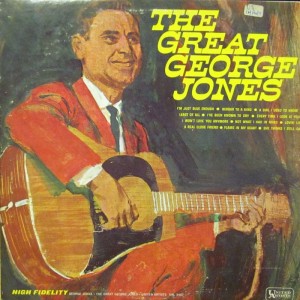 George Glenn Jones (September 12, 1931 – April 26, 2013) was an American country music singer known for his long list of hit records, his distinctive voice and phrasing, and his marriage to Tammy Wynette.
George Glenn Jones (September 12, 1931 – April 26, 2013) was an American country music singer known for his long list of hit records, his distinctive voice and phrasing, and his marriage to Tammy Wynette.
Over the past 20 years, Jones has frequently been referred to as the greatest living country singer.
Throughout his long career, Jones made headlines often as much for tales of his drinking, stormy relationships with women, and violent rages as for his prolific career of making records and touring. His wild lifestyle led to Jones missing many performances, earning him the nickname “No Show Jones.”
The shape of his nose and facial features have given Jones the nickname “The Possum.”
George Jones has been a member of the Grand Ole Opry since 1956. Jones has received many honors during his long career, from Most Promising New Country Vocalist in 1956, being inducted into the Country Music Hall of Fame in 1992, and being named a Kennedy Center Honoree in 2008. In 2012 he was presented with a Grammy Lifetime Achievement award. At the ceremony his longtime friend Merle Haggard paid tribute to him.
George Jones died April 26, 2013 at Vanderbilt University Medical Center in Nashville, Tennessee. He was hospitalized April 18 with fever and irregular blood pressure.
A True Country Music Legend – “George Jones”
Read more at: http://en.wikipedia.org/wiki/George_Jones

